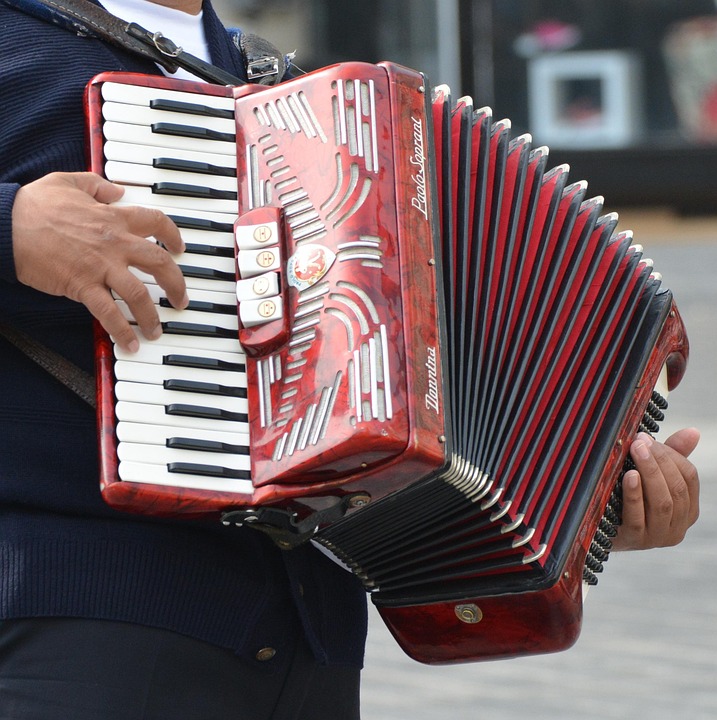Die faszinierende Welt der Harmonika: Ein melodischer Begleiter durch die Zeit
Hast du dich jemals gefragt, wie dieses kleine Instrument so viele Herzen berühren kann? Die Harmonika, auch bekannt als Mundharmonika, ist ein wahres Wunderwerk der Musik. Lass uns gemeinsam eintauchen in die Geschichte, die Vielfalt und die Magie dieses besonderen Instruments.
Ein Blick auf die Mundharmonika
Die Harmonika ist ein Blasinstrument, das in deiner Handfläche Platz findet. Mit ihren glänzenden Metallplatten und dem charakteristischen rechteckigen Gehäuse ist sie ein echter Hingucker. Aber es gibt nicht nur eine Art von Harmonika:
- Diatonische Harmonika: Der Klassiker für Blues und Folk
- Chromatische Harmonika: Mit zusätzlicher Taste für alle Halbtöne
- Tremolo-Harmonika: Für den typischen „schwebenden“ Klang
- Oktav-Harmonika: Mit doppelten Tonreihen für einen volleren Klang
Jede Art hat ihren eigenen Charme und findet in verschiedenen Musikstilen Verwendung. Allerdings ist die Funktionsweise immer ähnlich.
Sie besteht aus mehreren nebeneinander angeordneten Kammern, in denen sich Metallzungen befinden. Diese Zungen erzeugen den charakteristischen Klang, wenn Luft in die Harmonika hinein geblasen oder herausgesogen wird.
FunFact: Verwechslungsgefahr mit der steirischen Harmonika: Klingt ganz ähnlich, hat aber mit der Mundharmonika nicht viel zu tun. Im Gegenteil, denn bei diesem Instrument handelt es sich um ein Akkordeon, das bekannt nicht mit dem Mund gespielt werden kann und dessen Größe die Mundharmonika um einiges überragt.

Image by meineresterampe from Pixabay
Eine Reise durch die Zeit
Die Geschichte der Harmonika ist so melodisch wie das Instrument selbst. Ihre Wurzeln reichen bis ins frühe 19. Jahrhundert zurück:
1821 erfand der deutsche Uhrmacher Christian Friedrich Ludwig Buschmann die erste Mundharmonika. Damals nannte er sie „Aura“ – ein Name, der die magische Ausstrahlung des Instruments perfekt einfing.
- Goldgräber während des Goldrausches
- Soldaten in den Schützengräben des Ersten Weltkriegs
- Blues-Musiker in den Straßen von New Orleans
Die Harmonika hat Freud und Leid begleitet, Geschichten erzählt und Emotionen zum Ausdruck gebracht wie kaum ein anderes Instrument.
Lerne die Sprache der Harmonika
- Wähle deine Harmonika: Beginne mit einer diatonischen Harmonika in C-Dur.
- Atme richtig: Die Grundlage ist die Kontrolle deines Atems.
- Einzeltöne: Lerne, einzelne Löcher anzublasen.
- Einfache Melodien: Starte mit bekannten Liedern.
- Bending: Diese Technik erlaubt es dir, Töne zu biegen.
Mit regelmäßigem Training wirst du schnell Fortschritte machen.
Harmonika-Helden: Inspiration für dein Spiel
- Little Walter: Revolutionierte das Blues-Harmonica-Spiel.
- Stevie Wonder: Bewies, dass die Harmonika auch in Pop und R&B glänzen kann.
- Bob Dylan: Nutzt die Harmonika für emotionale Folk-Songs.

Image by Ben Kerckx from Pixabay






